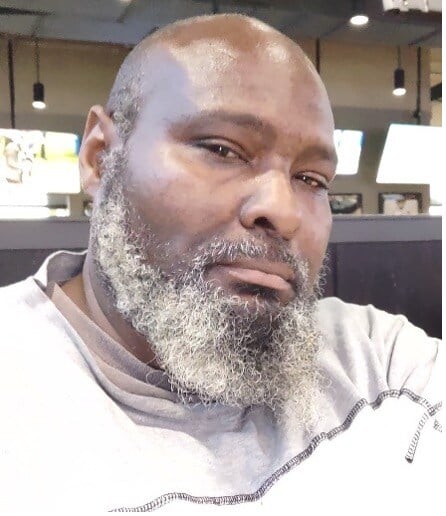[Guest blog by SMART Facilitator Austin Farrell]
The first 30 days of recovery can feel like a storm. Fear. Self-doubt. Cravings. A constant tug-of-war between what you want, what you think you should want, and what everyone else tells you to do. It’s messy. It’s overwhelming. And yet, those first 30 days can also be the beginning of real transformation.
Your first month doesn’t define your recovery, but it can change your life.
Ambivalence Is Normal — And It’s Human
When I first thought about making a change, my goals shifted all the time. Some days I swore I was done for good. Other days I convinced myself moderation would be enough. I knew my drug of choice was costing me more than it was giving, but I didn’t want to be “the guy who had to give it up.”
That inner tug-of-war left me stuck. Was abstinence the only real option? Could moderation work? Or was I just repeating what other people told me I should do?
I tried harm reduction first. Did it always work? No. But even the slips became teachers. Each one showed me something—what triggered me, what didn’t work, and where I needed more support. Failure wasn’t the end. Failure led to lessons. And lessons led to growth. Ambivalence isn’t weakness. It’s human. And in recovery, it can be the raw material for change.
Autonomy Over “Shoulds”
One of the hardest parts early on was being told what I should do. Well-meaning people insisted abstinence was the only acceptable goal. But I was already wrestling with doubts and fears, and the added pressure only made me push back harder.
My need for autonomy was strong. The more people tried to dictate my path, the less I wanted to follow it.
That’s why SMART Recovery fit so well. It didn’t hand me a script. It gave me tools to explore my own choices, my own motivations, and my own goals. Recovery became something I chose, not something imposed. And that choice made all the difference.
Coping With Cravings in Real Life
Cravings are inevitable, especially in the first 30 days. People told me to “play the tape through” — imagine the full consequences of using again. Sometimes that worked. Often it didn’t.
What helped me more was something simpler: delay. I’d tell myself, “Not tonight. I’ll decide tomorrow.” That pause — just pushing the decision forward a day — was often enough to get me through the moment. And when tomorrow came, I could delay again.
SMART tools lined up perfectly with this kind of real-world approach:
-
Cost-Benefit Analysis (CBA): I found it worked best when I did it before a craving. Writing out the tradeoffs while calm gave me something solid to look at later when my brain was fogged with urges.
-
Urge Surfing: Instead of fighting cravings, I practiced noticing them rise, peak, and fade like waves. It was liberating to realize I wasn’t my addiction. I was just experiencing an urge — and urges always pass.
-
DISARM: I prepared in advance by naming the destructive self-talk that usually pulled me in, so I could challenge it quickly when it showed up.
A little preparation went a long way. The tools worked best when I practiced them outside the storm, so they were ready when the storm hit. A hole in the roof is obvious when it’s raining — but it’s a lot easier to fix on a sunny day.
The Power of Connection
Another key piece in those first 30 days was connection. At first, I thought recovery was something I had to figure out alone. But isolation only made things harder.
Joining a recovery-centered community — sitting in a meeting, hearing others share their struggles and successes — reminded me I wasn’t alone. Even when I wasn’t sure of my own goals, just being around others on the same journey helped me hold on to hope.
Recovery doesn’t have to be solitary. In fact, it works best when it isn’t.
Small Wins, Big Shifts
One of the most important lessons of early recovery is that progress isn’t about dramatic breakthroughs. It’s about small wins.
-
Delaying for one night.
-
Attending a single meeting.
-
Journaling instead of drinking.
-
Choosing a healthy outlet over an old habit.
On their own, these might seem small. But stacked together, they build momentum. They create evidence that change is possible. And over time, those small steps shift the whole trajectory of your life.
Hope and the Road Ahead
If you’re in your first 30 days, know this: ambivalence, slips, and setbacks don’t mean you’re failing. They mean you’re learning. And every lesson makes you stronger.
Recovery isn’t about perfection. It’s about growth. And SMART Recovery provides a roadmap through the 4-Point Program:
-
Building and Maintaining Motivation
-
Coping with Urges
-
Managing Thoughts, Feelings, and Behaviors
-
Living a Balanced Life
And if you’re a loved one of someone struggling, you don’t have to do it alone either. SMART also offers Friends & Family meetings, based on the Community Reinforcement and Family Training (CRAFT) model, to support healthier communication and relationships.
The first 30 days aren’t about being perfect. They’re about beginning — with courage, preparation, and community. Every step forward, no matter how small, is proof that you are capable of growth.
To find and in-person or online meeting go to the “Meetings” tab at www.smartrecovery.org

![[Podcast] Providing Insight Others Couldn’t See](https://smartrecovery.org/hubfs/Imported_Blog_Media/Keegan-Wicks-1-2.jpg)

